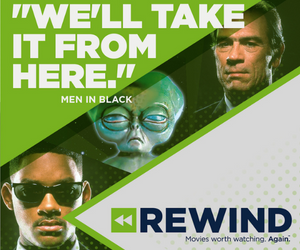BANFF – The questions have been delivered in almost every conference room, certainly every hallway of the Banff World Media Festival this year. It has also been postured in many forms: How will Google, Apple and Netflix influence the Canadian broadcast industry? Is the CRTC’s present policies helping or hindering the equation? What about vertical integration?
Times, They Are A-Changin’, so what should we do?
At the Canadian Media Leader session late Sunday afternoon, there was some consensus on the state of affairs in the industry and the direction of video production and development in the country.
For starters, Bell Media president Kevin Crull, Rogers Media president Keith Pelley, group vice president, broadcasting and president Shaw Media Paul Robertson and executive vice-president, English Services, CBC Kristine Stewart agreed there is pressure in the industry because of a market shift. Namely, the advertising market share is divided among several different platforms and the broadcast portion of revenue is shrinking.
Pelley says marketers now have “infinite places to advertise (Google, Facebook, other over-the-top services, digital) and the Internet is making up 25% of the market. It is projected to reach 50% by 2015”. The tablet has changed the game in mere months, although we’ve seen it coming, he added. These broadcasters also seem to agree they they’ve done a good job capitalizing on the revenues of specialty channels but not on digital avenues. There is a capacity issue: just too many channels (of old and new media). Also, “we don’t measure it properly. We don’t have single source data to go to so we are behind as an industry in catching up with digital and how we can properly monetize it,” says Robertson.
So despite a banner year for Canadian content (quality and quantity) – which is the upside everyone agrees on – the industry is in flux and there is much debate on how to proceed.
When prompted to lend the incoming CRTC chair Jean-Pierre Blais some advice, the panel had some ideas.
Robertson suggested the CRTC should consider the current competitive frame of reference for companies like his to Google and Facebook and aid them in the fight for market share. Crull proposed “removing genre exclusivity in linear TV and letting the best content win.” Pelley suggested more consistency with policy-making in the areas of group licensing and vertical integration. Feeling the CRTC should “operate with a bias towards free markets, jump in when needed, and post-facto intervention when things go wrong.” Stewart suggested the CRTC keep up with the speed of changes.
The Commission, of course, does not regulate over-the-top programming services and according to the CRTC Commissioner for Alberta and NWT, Peter Menzies, the CRTC has been monitoring “the impact of those services and so far, they appear to be complementary” to linear TV. Instead of stepping in with regulation, he sees the CRTC’s role as one of supporting the industry and helping a mind-shift towards the positive – calling upon everyone to think of over-the-top services as an “opportunity to export and promote Canadian content and product around the world.” He also encouraged the development of a collective broadcast industry voice to be relevant in the conversation.
(Menzies stepped in for Monday morning’s breakfast chat for acting chair Len Katz who had to pull out of attending the Banff fest due to a personal medical issue.)
So we need to compete then. Will vertical integration help that?
Crull feels “the only way we are going to be able to invest and innovate is if you have enough scale to support it. Platforms, content, new business models.”
“As the only independent broadcaster that doesn’t have vertical integration, I think you need both. We live in a world where scale is absolutely important and you need to be able to invest in things in a big way,” counters Stewart. “Independence is important too. If you look at any developed country around the world, there is that independence.”
Robertson also appreciates that the broadcasting industry benefits from independents. “Canadians enjoy the diversity of programming on their TV sets like no other country,” he said noting that the concepts that some of the independent broadcasters run with are not what they would go for—they have a different view of things. “I think there are safeguards in place to ensure independents.”
Perhaps moderator Michael MacMillan, co-founder and CEO, Blue Ant Media (one of those independent broadcasters) said it best. The panel is somewhere between: “Keep calm and carry on. And panic and freak out.”



